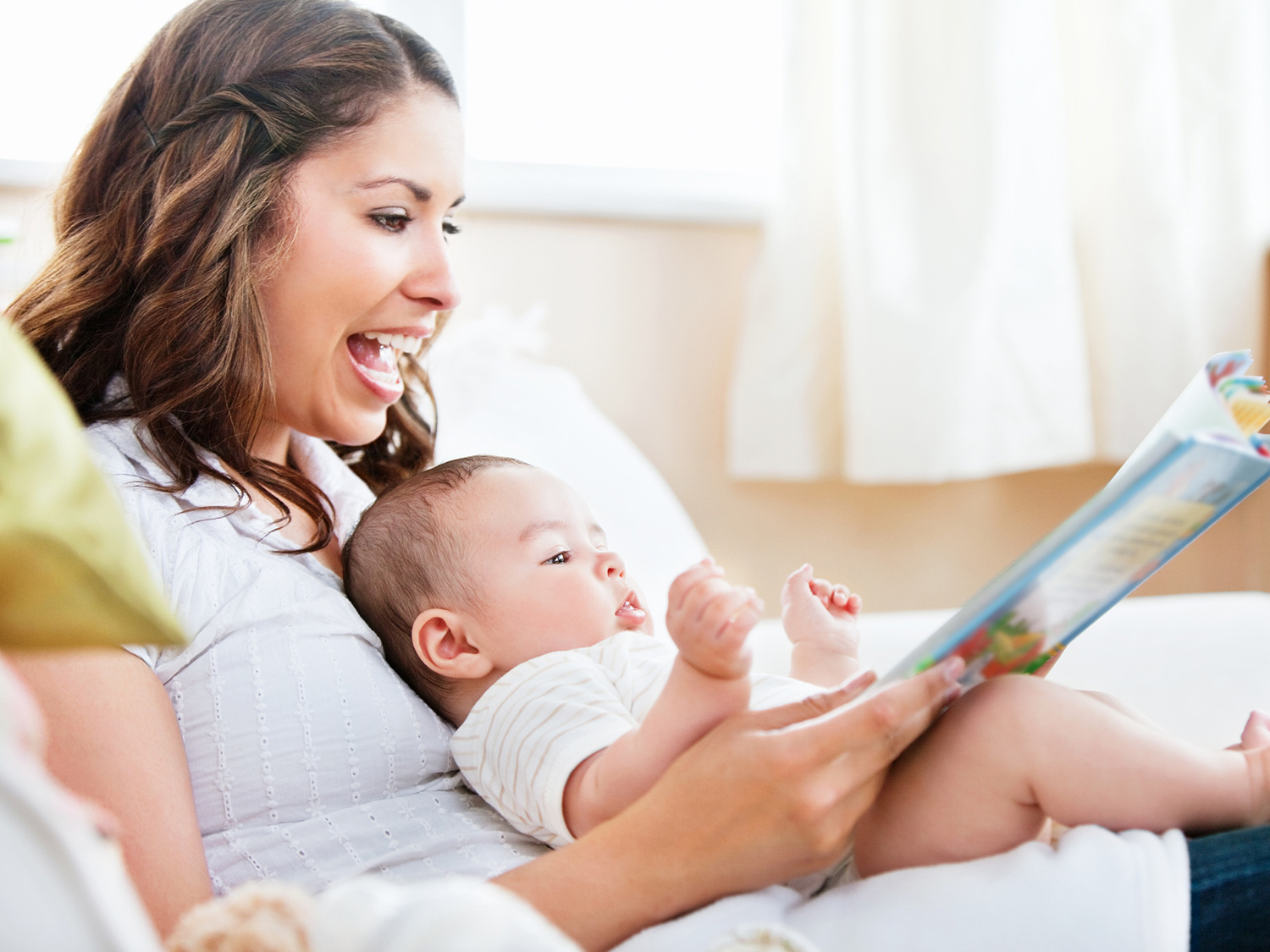There is possibly no greater shift in development than the advancement of language abilities from birth to three. While researchers disagree about the extent to which we come pre-wired to learn language, there is no dispute that the ability to learn to fluently speak one or more languages is a uniquely human ability that (barring another complication) we are all capable of doing. It is an amazing process to behold!
Children do not arrive in the world understanding language. It is a skill they must develop over time. However, they do arrive primed to tune in to human voices and the units that make up any of the world’s languages, including sign languages. Babies will understand language (receptive language; comprehension) before producing language themselves (productive language; language output). Long before they utter their first word, babies are developing the necessary sub-skills for language: participating in meaningful interactions with a caregiver, making vocalizations, coordinating gestures with utterances, making word approximations, etc. The road to demonstrating a basic level of language mastery is long, about 18 months for hearing children who are not using signs for early communication. Research done on children whose parents used select American Sign Language (ASL) signs in our Signing Smart programs demonstrates significant linguistic advantages tied to strategic sign use. In fact, many of our signing babies are able to demonstrate a relatively advanced level of linguistic mastery with signs, or a combination of signs and words, by 12 months.
Of course, the best way to facilitate language development is face-to-face interactions with your child. However, utilizing online resources expands the set of interactions you and your child can have. Be sure that you are talking and interacting as you experience some language development websites, together:
- Peekaboo game that rewards baby’s banging with a friendly pop-out. Hang a mobile for visual stimulation — if your child's mobile has animals, you can enhance language development by talking about them, making the animal sounds, etc.
- Toddler games that you can use to get your child thinking and talking. With this game, can kids guess the animal by its eyes and sound? Can they imitate the sounds?
- Baby Animals: Use animal sounds along with words and signs to help your child’s language development with cute animal photos.
- Body Parts: For a fun game where your baby can just bang on the keyboard and learn parts of the face, try KiddiesGames.com.
- Online Animated Stories: Simple online animated stories can be found at Fungooms.com.
- Color Festival: Let your child drag the mouse across the screen making different size lines and circles. Clicking will change the color…ask your child questions and engage him as he explores this online color “playground.”
- Talking Tom apps: Support your child’s talking at almost any stage with the Talking Tom series of free apps (e.g., Tom the Cat, Gina the Giraffe, Pierre the Parrot, Ben the Dog, etc.): They will repeat back any vocalization your child makes!
- Animated Nursery Rhyme “games": Make nursery rhymes super fun with these simple interactives. You can foster language development and literacy as you visually engage your child in these playful experiences!
After 18 months, children’s language will typically skyrocket. Children using signs tend to have larger vocabularies than non-signers, and talk in advanced sentences. As these children expand their spoken language skills, they tend to transition fully to spoken language, with signs simply serving a clarification or learning function. There is a close relationship between children’s vocabulary and the kinds of cognitive problems they are able to solve, demonstrating how language abilities influence many aspects of learning and development.
Between the ages of 1½ and 3, grammatical markers begin to come in (e.g., -ing, plurals, articles like “the,” etc.), children begin to use prepositions such as “in” or “under,” and they use pronouns like I or you. They typically produce more and more short sentences, reaching an average of 3 words per utterance by the time they turn three. Their articulation becomes clearer, with 2/3 – 3/4 of their speech being understandable to someone outside the home by the time they are three. They begin to ask questions and the famous “why?” after every parent statement makes its appearance.
On average, 2-year-old children have a vocabulary of approximately 150-300 words, with some children’s being considerably larger. By the time they are three, their vocabulary is between 900-1000 words on average. Children continue to struggle with rhythm and fluency, as well with the volume and pitch of their voice. They begin to combine sentences with conjunctions like “and,” and they begin adding details to their descriptions. Children with larger vocabularies can more easily engage parents and the world, allowing them to extend experiences.
Continue to support your child’s language development with engaging interactions, playful reading sessions, and ad-hoc language games. For example, try to trick your child by saying incorrect information, such as telling her that lions say “woof!” See if she can correct you, and then try to trick you. Use photos and images to engage your child and invite him into conversations about family members or remembrances of past adventures. Tell your child stories about herself, real or made up. Continue talking about colors and other adjectives (big, small, etc.). Make reading an intimate time and continue to engage your child in rhymes and word play, inviting her to sing along with you. Engage her thinking by asking her what she thinks will happen next, what the character is feeling, etc.

